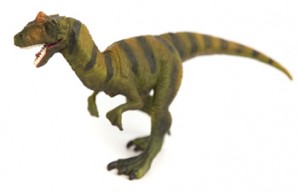Morrison Formation Dinosaur Discoveries
By the middle of the 19th century, pioneering palaeontologists had discovered the fossil rich Jurassic aged strata of mid-west America that became known as the Morrison Formation. The Morrison Formation is exposed in several parts of the USA, in the south, the strata was laid down in an arid, dry desert-like environment and fossil finds are relatively sparse. However, in the sequence of rocks exposed in Utah, they indicate a large, low-lying, alluvial flood plain and Mesozoic fossils, including dinosaurs are more numerous.
Morrison Formation
The rocks date from the Upper Jurassic and several genera of dinosaurs have been discovered in the many Utah quarries and dig sites, including famous dinosaurs such as Diplodocus, Allosaurus, Camptosaurus and Stegosaurus. New discoveries are being made each year and scientists at the Burpee Museum of Natural History have reported unearthing a virtual treasure trove of dinosaur remains at a new excavation.
The researchers report that between 60-70 new bones have been found at this new dinosaur quarry, including several articulated cervical vertebrae (neck bones) of a sauropod.
A New Fossil Site
This new site is close to Hanksville, a small town in Wayne County Utah. The early signs are that this could be an important site for Upper Jurassic fossils and may yield a new species or two. It seems that the site represents sediment that was laid down at a bend or slower flowing part of a river. Over many years, the remains of dead animals and drift wood were deposited in the same place and a sort of “Jurassic log jam” built up. The fossils are concentrated into an area about 2/3 the size of a football pitch.
Commenting on the fossil bone concentration, Scott Williams, Collections and Exhibits Manager at the Burpee Museum stated:
“In some places you can’t work to remove one bone without finding four or five more”.
It sounds like there are going to be some very well stocked dig stations as the team continue to excavate the fossil bones from the site. The researchers are hoping that the new discoveries will help them piece together a little more information about the ecosystem and the environment in the American mid-west 145 million years ago.
The team are expecting to have 10 years worth of digging ahead of them to fully explore this new location. Free guided tours of the dig sites will be taking place for the first couple of weeks of June, after that it will be time to get done to work for the palaeontologists as they attempt to plot, map and decipher the position of the many bones trapped in the rocks.
Numerous Dinosaur Genera
The Morrison Formation has yielded a number of dinosaur genera, it is especially known for the number of sauropods (long-necked dinosaur) discoveries and the variety of theropods excavated.
The theropods in particular have provided scientists with a unique insight into the evolution of meat-eating dinosaurs and the relationships between genera. Dinosaurs such as Ceratosaurus, Marshosaurus, Stokesosaurus and Torvosaurus are known from this area (Kimmeridgian to Tithonian faunal stages).
Perhaps the best known of all these theropods is Allosaurus (A. fragilis). At least 44 individuals have been recovered from the Cleveland-Lloyd quarry alone. Allosaurus was a formidable hunter, with a length of over 12 metres and weighing as much as 2.5 Tonnes. Its hind legs were massive, helping to support the animals weight and the head was perched on top of a “s” shaped neck.
The three-fingered hands had large claws on the digits and the arms were very strong. It seems to have been one of the largest predators in the area during this particular part of the Late Jurassic.
A Model of an Allosaurus
Picture credit: Everything Dinosaur
Dinosaur Models
To view a model of an Allosaurus and other figures in the Wild Safari Prehistoric World series from Safari Ltd: Safari Ltd. Wild Safari Prehistoric World.
Allosaurus belonged to a group of theropod dinosaurs called the allosaurids, a group that also includes such giants as Giganotosaurus and Carcharodontosaurus as well as the more lightly built Sinraptor.
To see a model of Sinraptor, Everything Dinosaur recommends readers take a look at the extensive PNSO modell range: PNSO Age of Dinosaur Models.
During the Cretaceous these animals went into decline and were gradually replaced in most parts of the world by other types of meat-eating dinosaur such as the spinosaurids, abelisaurs and tyrannosaurs. A few allosaurids survived into the Early Cretaceous but their remains are seldom found. It seems that from a peak in the Late Jurassic this type of meat-eating dinosaur became a sort of “living fossil” for the remainder of the Mesozoic.







Leave A Comment